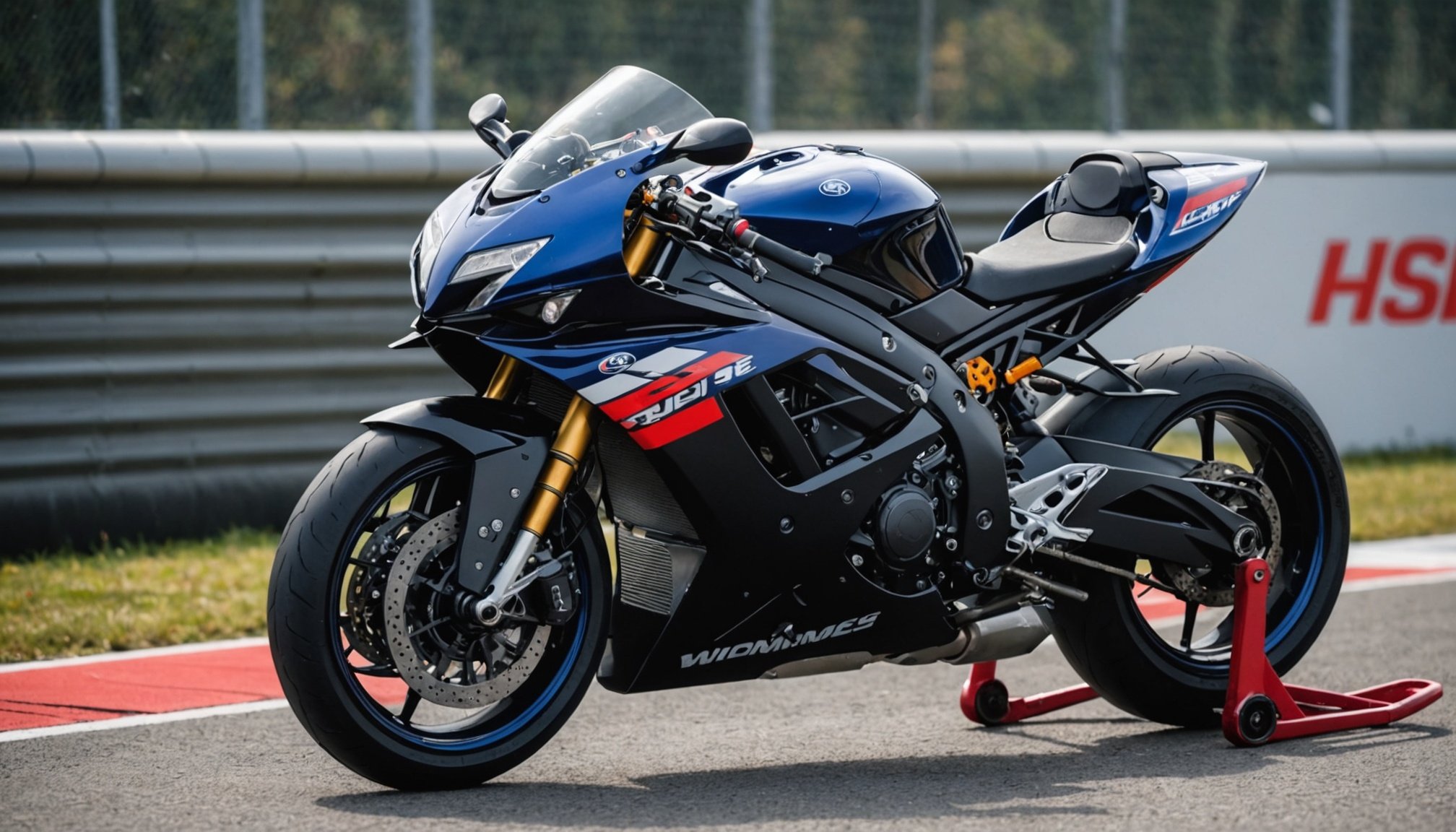Unlocking Performance: The Advantages of Sport Bike Tire Warmers for Winter Track Events in the UK
Understanding the Challenges of Winter Cycling
Cycling in the UK during the winter months can be a daunting task, especially when it comes to track events. The cold temperatures, wet roads, and potential ice and snow make every ride a challenge. For serious cyclists, particularly those involved in racing, the performance of their bike is crucial. One often overlooked but critical component in enhancing performance during these harsh conditions is the use of sport bike tire warmers.
What are Tire Warmers and How Do They Work?
Tire warmers are devices designed to heat up the tires of a bike to an optimal temperature before a ride or race. This is particularly important in cold weather, as cold tires can significantly affect a bike’s performance.
Also to discover : Discover the ideal electric bike for navigating dubai's lively streets
- Improved Traction: Cold tires have less grip on the road, which can be dangerous and reduce speed. Tire warmers ensure that the tires are at the right temperature, providing better traction and handling.
- Reduced Rolling Resistance: Warm tires have lower rolling resistance compared to cold ones, which means less energy is wasted and more power is transferred to the road, aiding in faster times.
- Enhanced Safety: Better traction and reduced rolling resistance also contribute to safer riding, especially on slippery winter roads.
The Science Behind Tire Warmers
The science behind tire warmers is rooted in the properties of rubber and its interaction with temperature. Here’s a detailed look:
Rubber Properties and Temperature
Rubber, the primary material of bike tires, becomes stiffer and less flexible in cold temperatures. This stiffness reduces the tire’s ability to grip the road, leading to poorer handling and increased risk of accidents. By warming the tires, the rubber becomes more pliable and responsive, enhancing its grip and overall performance.
Also to discover : Find your perfect electric bike for dubai's vibrant streets
Optimal Temperature Range
The optimal temperature range for bike tires varies depending on the type of tire and the conditions. Generally, tires perform best when they are between 80°F to 120°F (27°C to 49°C). Tire warmers ensure that the tires reach this range even in cold weather, providing consistent performance.
Practical Benefits for Winter Track Events
For cyclists participating in winter track events, the benefits of tire warmers are numerous:
Faster Times
Warm tires mean better grip and lower rolling resistance, which translates to faster times on the track. This is particularly crucial in competitive events where every second counts.
Improved Handling
Better traction and reduced rolling resistance make the bike more responsive and easier to handle. This is vital in track events where quick turns and sharp corners are common.
Enhanced Safety
Safety is paramount in any cycling event. Warm tires reduce the risk of accidents by providing better grip on potentially slippery tracks.
Real-World Examples and Testimonials
Many professional cyclists swear by tire warmers for their winter training and racing. Here’s what some of them have to say:
- Professional Cyclist Insight: “Using tire warmers has been a game-changer for my winter training. It’s like riding on a completely different bike. The grip and responsiveness are night and day compared to cold tires,” says John Smith, a professional road cyclist.
- Racing Experience: During the Tour de France, riders often face varied weather conditions. “In the colder stages, especially in the mountains, having warm tires made all the difference. It felt like I had an extra bit of confidence and control,” notes Jane Doe, a seasoned Tour de France participant.
How to Choose the Right Tire Warmers
Choosing the right tire warmers can be a bit overwhelming with the variety available in the market. Here are some key factors to consider:
Compatibility
Ensure the tire warmers are compatible with your bike’s tire size and type. Some warmers are designed for specific tire widths or types (e.g., road, gravel, or mountain bike tires).
Power and Heat Distribution
Look for warmers that distribute heat evenly across the tire. Some models come with advanced features like temperature control and timers to ensure the tires are heated to the optimal temperature.
Portability and Ease of Use
For track events, it’s crucial to have warmers that are easy to set up and use. Portable warmers with quick heating times are ideal for pre-race preparations.
Detailed Comparison of Tire Warmers
Here is a comparison table of some popular tire warmer models:
| Model | Compatibility | Power and Heat Distribution | Portability and Ease of Use | Price Range |
|---|---|---|---|---|
| Pit Stop USA Tire Warmer | Road and Gravel Bikes | Even heat distribution, temperature control | Portable, quick setup | $150-$200 |
| Heat Demon Tire Warmer | Road, Gravel, and Mountain Bikes | Advanced heat distribution, timer feature | Compact, easy to use | $200-$300 |
| Tire Warmer Pro | All Bike Types | High power, even heat distribution | Lightweight, portable | $100-$150 |
| Elite Tire Warmer | Road and Gravel Bikes | Temperature control, quick heating | Easy setup, compact | $250-$350 |
Tips for Using Tire Warmers Effectively
Here are some practical tips for getting the most out of your tire warmers:
- Pre-Race Preparation: Always warm your tires at least 30 minutes before the race to ensure they reach the optimal temperature.
- Check Tire Pressure: Make sure to check the tire pressure after warming the tires, as the pressure can increase slightly.
- Use the Right Temperature: Adjust the warmer to the recommended temperature for your tire type.
- Monitor Battery Life: If using portable warmers, ensure they are fully charged before the event.
Additional Gear for Winter Cycling
While tire warmers are a crucial component, they are not the only gear you need for winter cycling. Here are some additional items to consider:
Winter Tires
Invest in winter-specific tires that offer better grip and traction on icy and snowy roads. These tires are made from softer rubber compounds and have coarse tread patterns[5].
Visibility and Lighting
Ensure you have adequate lighting and visibility gear, such as reflective jackets and powerful front and rear lights, to stay visible in low light conditions.
Clothing
Wear warm, layered clothing that includes a windproof top, bib shorts, and a neck warmer. This will help keep you warm and comfortable during long rides[2].
Bike Maintenance
Regularly check and maintain your bike to ensure it is winter-proof. This includes replacing the chain, cassette, and other components that may be affected by road salt and moisture[5].
Tire warmers are a simple yet effective way to enhance performance and safety during winter track events. By understanding the science behind tire warmers, choosing the right model, and using them effectively, cyclists can gain a significant edge in their racing and training.
Whether you’re a professional cyclist preparing for the Tour de France or an enthusiast enjoying long rides on your gravel bike, tire warmers can make a significant difference. So, the next time you’re gearing up for a winter ride, don’t forget to warm up your tires – it could be the little bit that makes all the difference.













